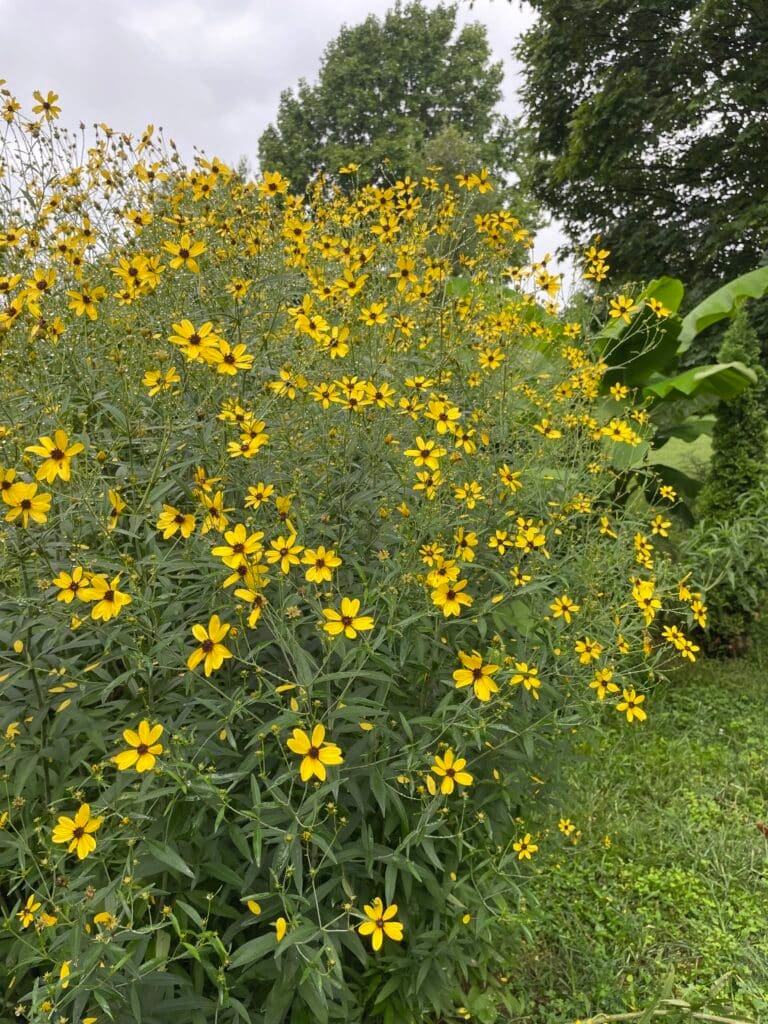What is the value of a garden? Is it the shade that the trees provide? Maybe it is the habitat the plants provide for all the critters that call it home? Is there value in the peace of mind it provides when you walk through it after a long day or early in the morning when the birds are starting to sing? Or, should we just add up all of the money we spent on each plant over the years and give it a monetary value? Me, being someone who loves being outside surrounded by plants could argue all of those but one is what gives a garden value. That last one though, the added up monetary value of a garden, shouldn’t be considered. Let’s compare it to other reasons of value and try to understand why.
If you walk through a yard without any trees on a hot summer day, you quickly think about shade and how there is none to be found. The old saying “the best time to plant a tree was 10 years ago and the next best time is today” sure makes a statement. Even if you had bought a small tulip poplar (Liriodendron tulipifera) 10 years ago and planted it when it was 3 feet tall, you would be standing in the shade of a 20-foot plus tree today. We planted three tulip poplar trees like this in 2013 at our home and now they are casting tremendous amounts of shade, the flowers in the spring are feeding insects, caterpillars are feeding on the leaves which are being eaten by birds, and each year birds are nesting in their branches! If you were to spend $150 on a small tree today, will the value still be the same in 10 years?

In the nursery at Yew Dell, we propagate and grow mostly perennials. Most of them start around $12 in our standard size containers. If you have purchased some of these from us within the last few years, what is their value today? I’ll argue fiercely that it is much more. Some of them are bigger now and taking up some serious real estate in your garden! A ‘Gold Standard’ tall coreopsis (Coreopsis tripteris*) will bulk up rather quickly; and one small plant from three years ago is probably 2-3 feet across by now! Its flowers provide a lot of food for insects this time of year and this fall would be a great time to divide it, move some to other areas of your garden, and share some with friends. That $12 plant has turned into a habitat in your garden, a 6-foot-tall mass of billowing yellow flowers, and this fall, you can turn the one plant into five or more. For you number people, that plant had a greater ROI than a hot new company on the stock market!
Let’s think back again to that tulip poplar. It’s already obvious that after just 10 years the value of that tree has increased tremendously, but what about in the next 10, 50, and 100 years? This is when we start building generational wealth in the garden. Drive through old neighborhoods, parks, and cemeteries and you will see trees that were planted by people who have now passed. Today, their great-great-great grandchildren can play under these trees and enjoy the shade that their ancestors left for them. Pretty cool, right? It even makes a large tree that costs $450 seem like a bargain!
What do all of these examples with warm and fuzzy feelings attached tell us? Is it really the initial cost of the plant that matters? Sure, you have to stay in your budget. But a tree or two a year and a few perennials a year are more of an investment that one-time cost. I’ve worked in plant sales long enough that I’ve heard my fair share of people jump up and down and belly ache about the costs of plants. I used to try and explain all of the costs that go into them. Our products have input costs just like any other products in other industries. The grower has to buy the plant, the container, the potting mix, the fertilizer, and all of the variable costs before the plant is even ready to sell. I’ll never get through to some people because they are just Ebenezer Scrooges, but for those of you who are curious about why a plant costs what it does, I’m taking the higher road from here on out. A greenhouse or nursery grower will spend X to provide a plant to you for Y the same way Apple spends X to provide an I-phone to you for Y but I’ll argue the value of our Y is much greater. Plant a tree today for $450 and your great-great-great grandkid can sit underneath of it in 100 years and look up the species of tree on their $5,000 I-Phone 52.
*Theodore Klein Plant Award winner. Learn more here.

